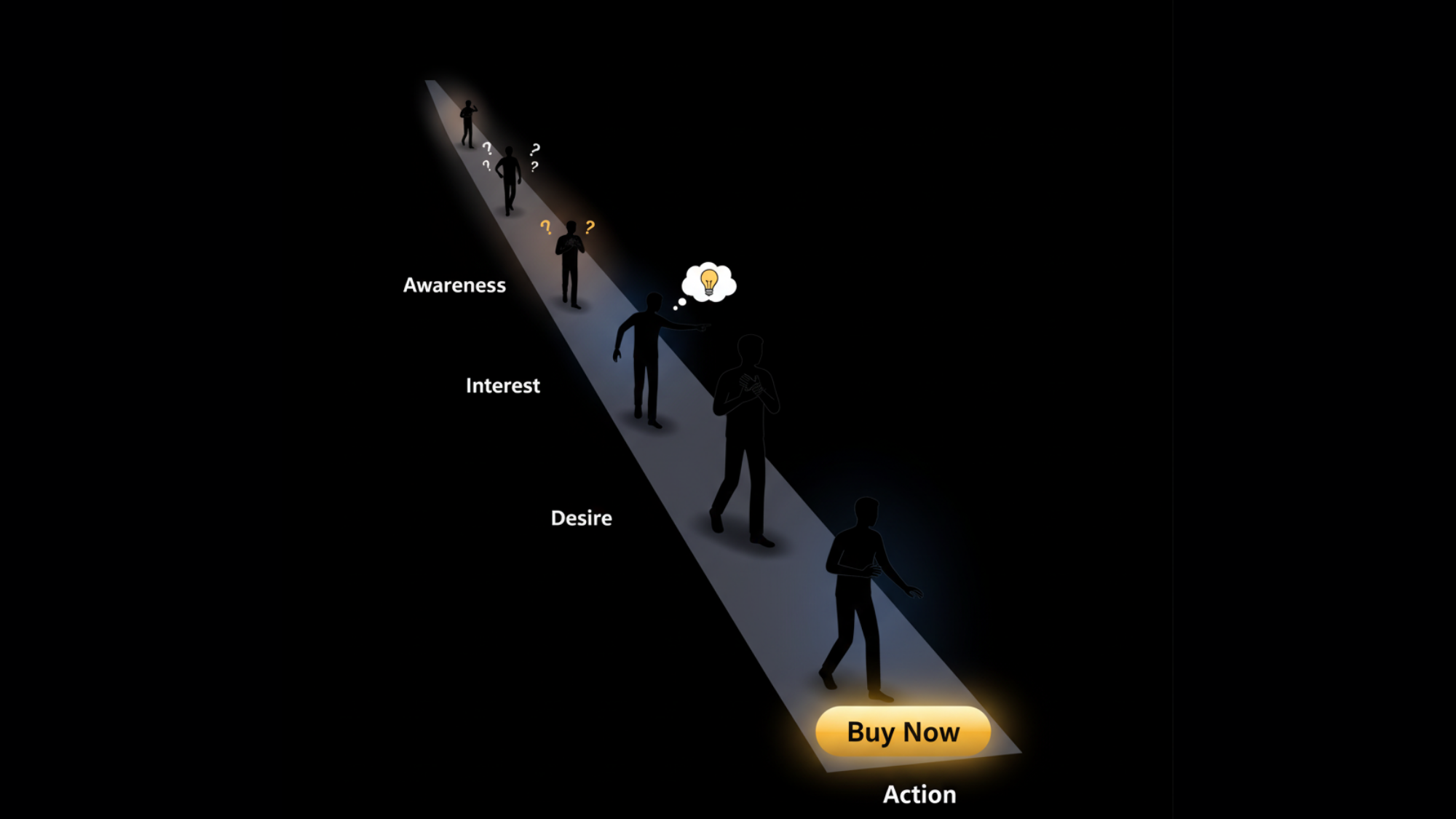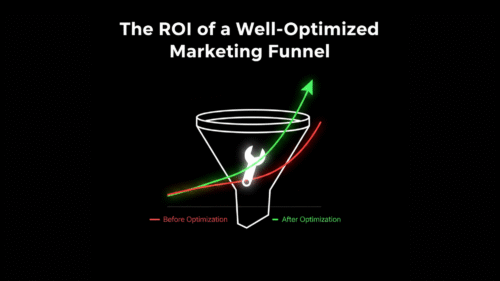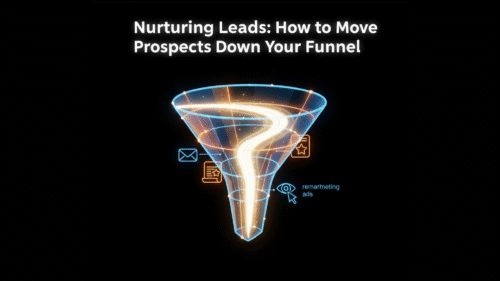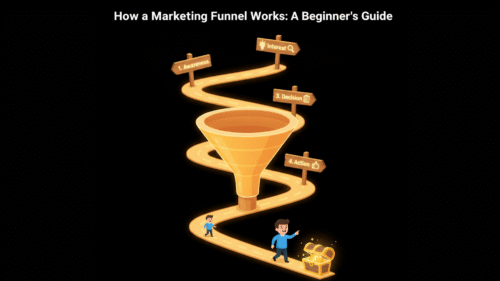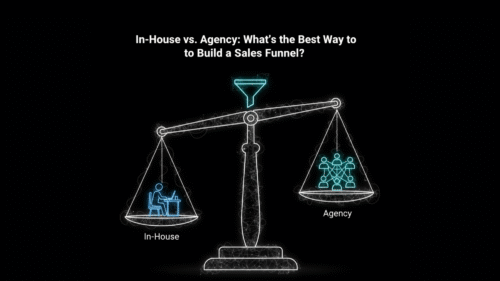Why the AIDA Funnel Model Still Works in 2025
If you’ve ever wondered why your ads bring traffic but few conversions, the answer might be hiding in your funnel structure. Too often, businesses push for the sale before their prospects are ready. The AIDA funnel model solves this by giving marketers a framework to guide people through the natural buyer’s journey.
First introduced over a century ago, the AIDA model—Awareness, Interest, Desire, Action— remains a cornerstone of modern marketing. And with digital channels multiplying, mastering this model has never been more important. Today, it’s not about shouting louder—it’s about structuring your funnel so prospects move smoothly toward conversion.
What is the AIDA Funnel Model?
The AIDA funnel model represents the four key stages of the customer journey:
- Awareness – Your audience first discovers your brand or offer.
- Interest – They begin engaging with your message and exploring solutions.
- Desire – They emotionally connect with your product and see its value.
- Action – They take the final step: purchase, subscribe, or sign up.
By aligning your marketing to these stages, you’re not just selling—you’re guiding.
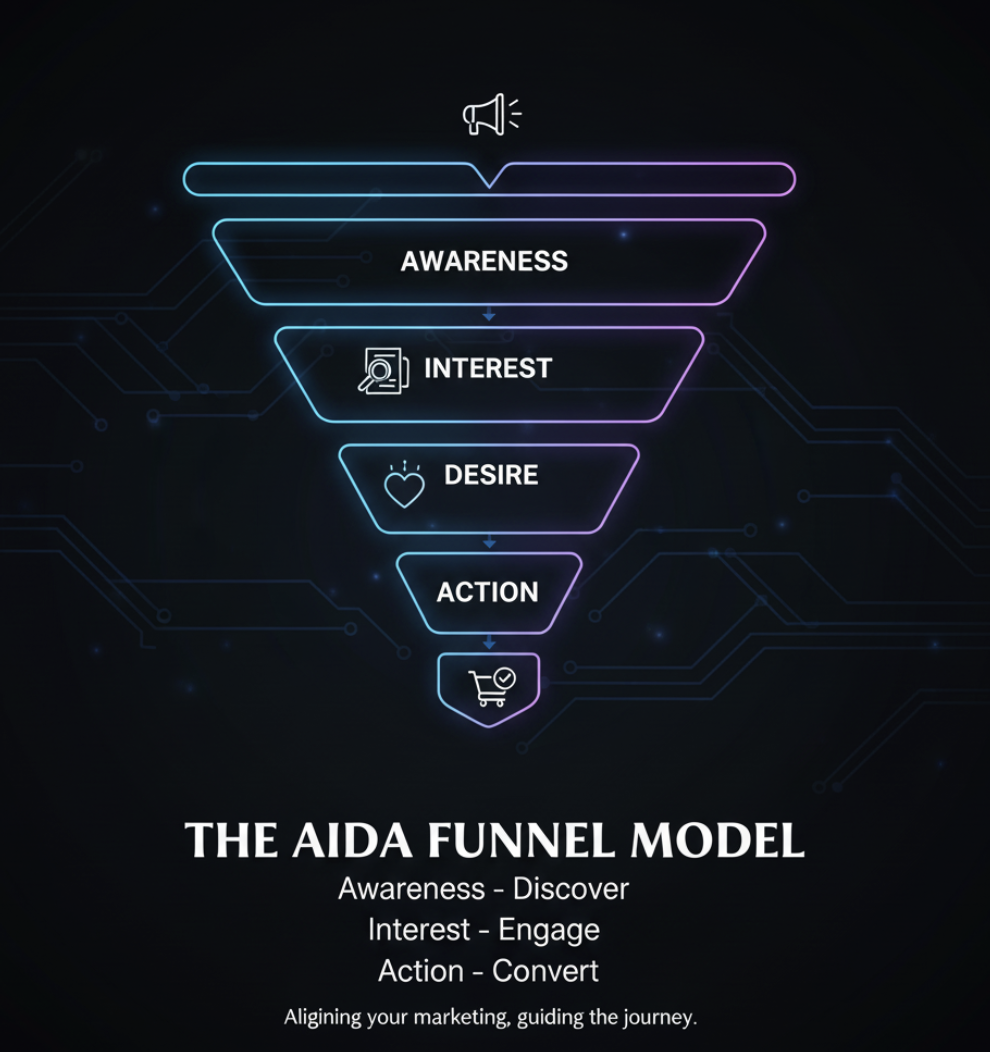
Stage 1: Awareness – Capture Attention
At the top of the funnel, your job is visibility. Prospects can’t buy if they don’t know you exist.
Tactics that drive awareness:
- SEO-optimized blog posts
- Social media campaigns
- Paid ads on Google or LinkedIn
- PR features and guest articles
💡 Pro Tip: Focus on creating helpful, value-driven content instead of pushing sales early. Think how-to guides, industry insights, or free resources.
See how ActStrategic.ai helps businesses find clarity in their growth strategy.
Stage 2: Interest – Build Engagement
Once you’ve captured attention, you need to turn it into curiosity. Interest is nurtured by showing relevance and building credibility.
Ways to build interest:
- Email nurture sequences
- Targeted remarketing ads
- Case studies and customer stories
- Webinars or free workshops
This stage is where your brand starts to stand apart. Instead of broadcasting, you’re building a relationship.
Helpful resource: Check out the Prompt Resource Library for tools that help spark engagement.
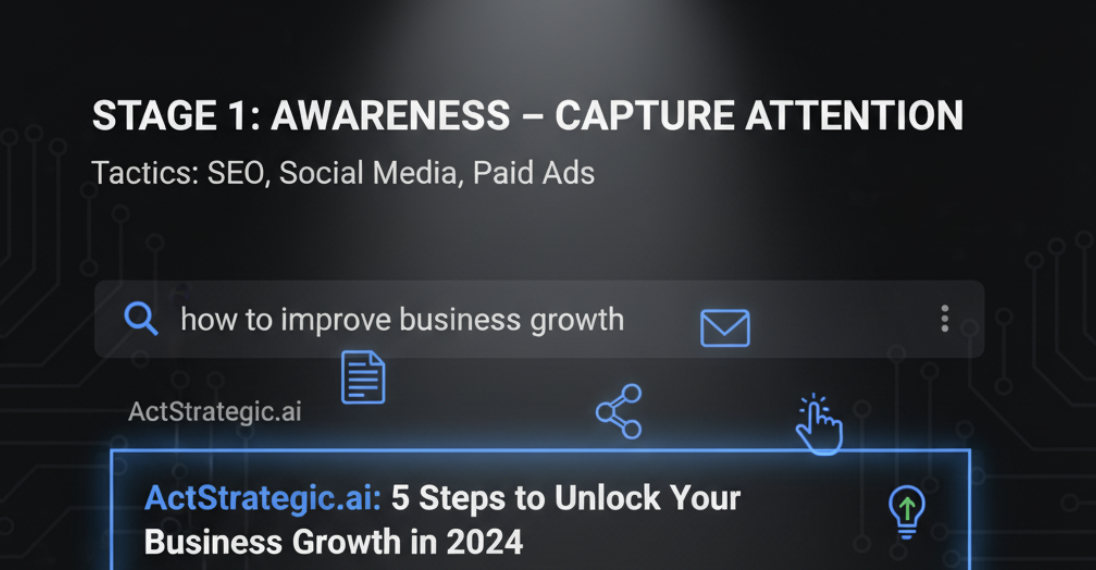
Stage 3: Desire – Create Emotional Pull
Desire is about transformation. At this stage, prospects must feel that your product or service solves their problem better than any other option.
Desire drivers:
- Testimonials and social proof
- Personalized product demos
- Persuasive storytelling
- Strong value propositions
👉 This is also where clarity matters most. If your offer is confusing, even interested leads will hesitate. Consider using our Fix My Offer tool to make sure your messaging is airtight.
Stage 4: Action – Convert with Confidence
Finally, prospects are ready to act. But friction at this point—clunky checkout, unclear CTAs, hidden fees—can still derail the conversion.
Best practices for the action stage:
- Clear calls-to-action (Buy Now, Book a Demo)
- Simplified checkout process
- Limited-time offers
- Guarantee or risk-reversal messaging
If conversions are stalling here, it’s often a funnel leak. Use our Fix My Funnel report to pinpoint exactly where prospects are dropping off.
Benefits of Applying the AIDA Funnel Model
Why use the AIDA funnel model in your business? Because it transforms scattered marketing into a clear system.
Key benefits:
- Higher conversion rates
- Reduced wasted ad spend
- Clearer customer journey mapping
- Scalable, repeatable marketing strategy
For more strategies, explore our Fix My Website Conversions tool.
External resource: Harvard Business Review explores why funnel frameworks still outperform random tactics (read here).
Quick Comparison: AIDA vs. Random Marketing
| Approach | Result |
|---|---|
| Random campaigns without structure | Leads drop off at random stages |
| AIDA-guided campaigns | Consistent lead nurturing and higher ROI |
FAQ: AIDA Funnel Model
1. What is the AIDA funnel model?
It’s a classic framework that maps the customer journey: Awareness, Interest, Desire, Action.
2. How do I apply AIDA to digital marketing?
Use targeted content at each stage: blogs for awareness, case studies for interest, testimonials for desire, and CTAs for action.
3. What if my funnel is getting traffic but no sales?
The issue may lie in the Desire or Action stages. Tools like Fix My Funnel can help you diagnose.
4. Is the AIDA model outdated?
Not at all. While newer models exist, AIDA remains highly effective because it mirrors natural decision-making.
5. How do I know if my offer is weak?
If leads show interest but fail to act, it may be an offer clarity problem. Try Fix My Offer.
Final Thoughts
The AIDA funnel model isn’t just marketing theory—it’s a proven framework that helps businesses guide prospects step by step toward conversion. When applied correctly, it sharpens your messaging, reduces wasted effort, and boosts ROI.
🚀 Ready to uncover leaks in your funnel? Get clarity with our Fix My Funnel tool and start scaling with confidence.

